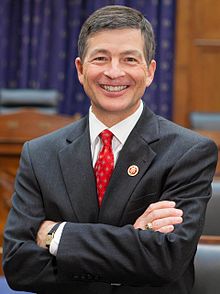By Jim Ellis — July 25, 2022
Senate
New Hampshire: Toss-Up Polling — The progressive left research firm Data for Progress (June 22-July 8; 903 likely New Hampshire voters; online) released their latest Granite State poll and find Sen. Maggie Hassan (D) headed toward her predicted re-election dogfight. The ballot test series appears interchangeable, suggesting that the incumbent is endangered regardless of who she faces after the Sept. 13 primary. Though the sampling period for this poll is long, the sample size is high thus negating some of the accuracy flaws. The results are also consistent with other polling, so the numbers appear legitimate.Polled against state Senate President Chuck Morse (R-Salem), Sen. Hassan leads 49-46 percent. Both retired Army General Don Bolduc (R) and former Londonderry Town Manager Kevin Smith (R) record 49-45 percent deficits against Sen. Hassan. The New Hampshire Senate race will prove to be one of the key races in the nation to determine the next majority.
House
IA-3: No Surprise, a Dead Heat — The Moore Information Group tested the toss-up rated IA-3 congressional race between two-term Rep. Cindy Axne (D-Des Moines) and state Sen. Zach Nunn (R-Bondurant). Not surprisingly, the poll results (July 9-11; 400 likely IA-3 voters; live interview) found the two candidates tied at 43 percent apiece. Axne never reached 50 percent in either of her congressional wins. Therefore, we can expect another very close result come election night.
MI-11: Shock Poll — We haven’t seen a poll of the intra-party Democratic congressional primary pairing between Reps. Haley Stevens (D-Rochester Hills) and Andy Levin (D-Bloomfield Township) since February, but a new Target Insyght survey conducted for the Jewish Insider publication suggests the race has drastically changed. Early in the year, the two were virtually tied in a series of surveys. The TI poll (July 18-20; 500 likely MI-11 Democratic primary voters; live interview) now finds Rep. Stevens holding a commanding 58-31 percent advantage, however.
The result doesn’t make much sense when looking at the favorability indexes of both candidates. Stevens records a 71:20 percent favorable to unfavorable score, while Rep. Levin’s is a similar 65:21 percent. Comparing these numbers with a landslide ballot test conclusion appears inconsistent. Expect the Levin camp to shortly release countering data.
States
Nevada: Top Five Qualifies — The ballot change initiatives keep popping up around the country, and the Nevada Secretary of State announced a measure late last week to create a jungle primary that sends five finalists to the general election; this initiative has qualified for the November initiative ballot. Ranked Choice Voting would then be used to determine the general election winner.
The plan is a long way from being enacted, however. Under Nevada initiative law, measures must be adopted in two consecutive elections. This means even a victorious “Yes” vote in November would again go before the voters in 2024. Furthermore, the state’s Democratic leadership has stated their united opposition. Gov. Steve Sisolak (D) and Sens. Catherine Cortez Masto (D) and Jackie Rosen (D), along with the state AFL-CIO, are all urging a “No” vote.





